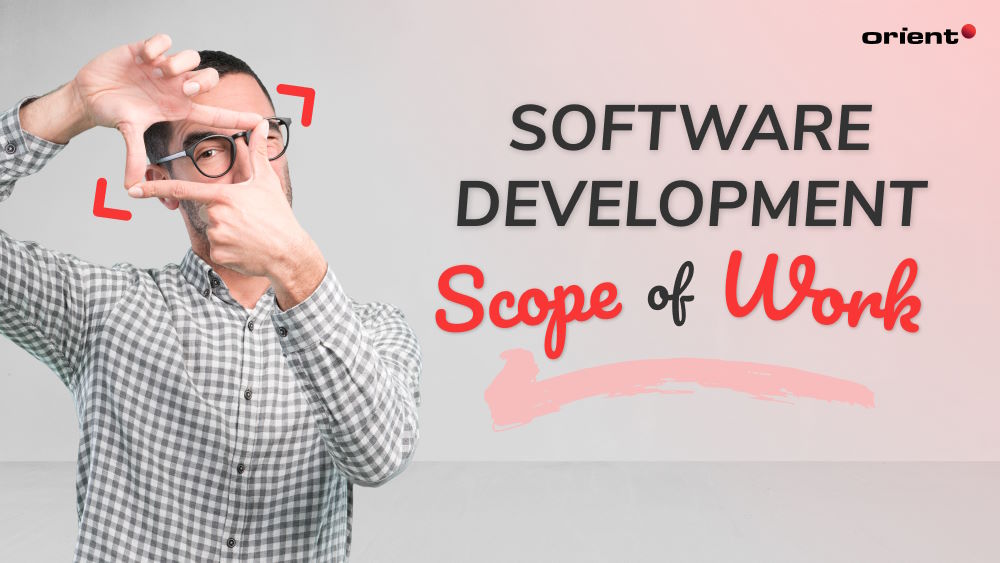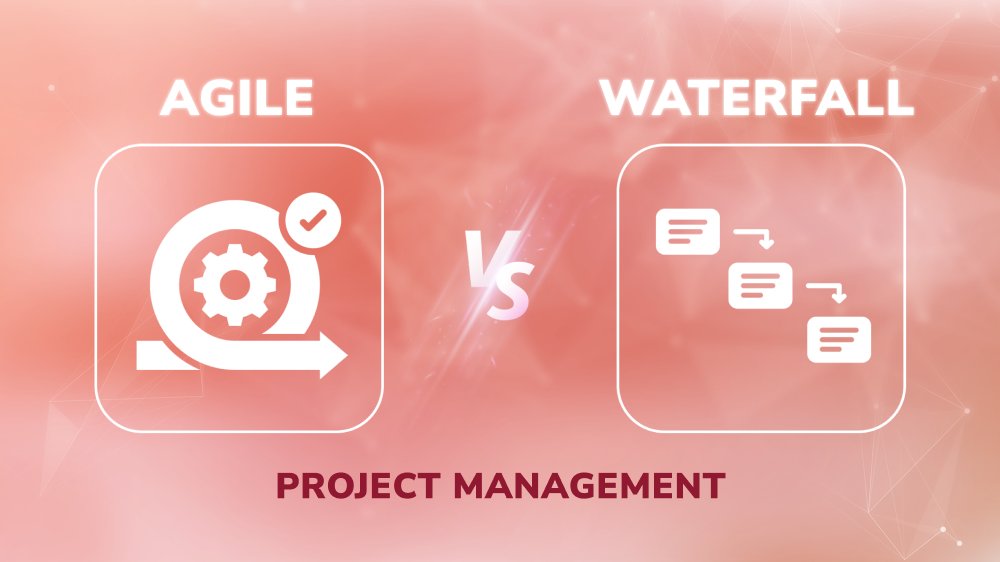
Software Development Scope of Work: How to Upgrade Yours to Achieve the Best Results

Content Map
More chaptersBefore the start of any kind of software development project, there needs to be a clear scope of work. This document should be ready even before the planning is completed.
Without a proper software development scope of work to delineate what needs to be done in a given amount of time and budget, businesses easily suffer cost overruns. A recent survey found that 41% of organizations suffered cost overruns for global enterprise resource planning (ERP) installation projects as of 2022. It was a significant rise compared to the previous year. Do keep in mind that going over budget doesn’t always mean that the expected value is delivered.
With that being said, developing a software development scope of work is hard work as it isn’t always so cut and dry. In this article, we’ll guide you through a step-by-step process to write the best possible blueprint to rely on, along with some valuable tips. Otherwise, if you still find yourself too busy or stuck neck-deep in unfinished tasks, our team of professionals at Orient Software - a top-notch software development company based in Vietnam - is always ready and happy to help.
The Basics of a Software Development Scope of Work
In order to execute a software development scope of work well, we need to get the basics down first.
What Is the Scope of Work in Software Development?
A software development scope of work (or software development statement of work when it is part of a legally binding contract) outlines in great detail the tasks that must be carried out as part of a software development project. This document is often conducted between the software development vendor and the client.
Product teams, IT teams, marketing organizations, and others can utilize the scope of work documents, or SOWs for short, to make sure that the project scope is well-considered and agreed upon before work begins.
Content of a Software Development Scope of Work
A well-written SOW covers the following:
- Objectives: The most crucial part that the objectives should cover is why you or your team are working on this project. It is crucial to detect these early on since a change in project objectives is the second most common reason for project failure.
- Scope: What deliverables are included and excluded in the project are specified in this section (the technical details, documentation, etc.)
- Terms of Collaboration: Project timeline, price, payments, and acceptance criteria are often parts both parties work out to see what each partner provides and to what extent.
- Deliverables: Whether it is a web app or software, the SOW should state the expected output. The detail of this often depends on the complexity of the project.
Who Writes the Scope of Work?
The SOW should, as a general rule, be written by the individual in charge of delivering the software development projects’ outputs. This person could be the project manager, the startup founder, or CTO (Chief Technology Officer).
Nonetheless, should the project be too complex, it is best to have a consultant with expertise in the field write the SOW. This ensures the SOW covers all the required elements while still being suitable for the project.
No matter the person in charge of writing up the SOW, have all stakeholders involved in the process – invaluable feedback and input often come with it. It goes without saying that the SOW should be carefully reviewed by every key person involved before being finalized and distributed.
Why Is the Scope of Work Crucial in Software Development?

A well-crafted SOW document guides you and your outsourced team toward a common objective. It serves as an effective project management tool that fosters trust and communication. It also ensures that:
- The risk of miscommunication is lowered.
- The expectations are stated clearly.
- Everyone moves forward with the goal in mind.
- The necessary guidelines are created (e.g., when some changes need to be implemented, what the project milestones are, a template for the progress report, etc.)
- Prevent any scope creep from happening. (Scope creep is a phenomenon that happens when a project’s original goals are altered or added to, either with or without the project manager’s and key stakeholders’ consent. In the worst cases, scope creep can create unwanted delays or cost running.)
How to Write a Scope of Work?

SOW is an important business document. However, drafting one can be overwhelming and confusing, especially for those who haven’t got a lot of prior experience doing it. It always helps to have some guidance, so read on to find what key components you need to get started with your first scope of work document.
General Introduction
General information about your project and its objective should be included at the start. Give your software development partner enough context and references for the project so that even people who are unfamiliar with it have plenty to rely on in order to help them comprehend your requirements.
It is also recommended that you include a brief description of the key roles (project managers, product owner(s), software developers, etc.).
Objective
Spell out the project goals in this part. Make sure the reader has a picture of the end product. Try to answer questions like: What pain point is the product trying to solve? What is your product trying to achieve?
Deliverables
It is time to think beyond your project objective and try to paint a specific picture of a successful project. This can be done in a number of ways, but a common way is to break down the project deliverables into smaller phases (sometimes referred to as work breakdown structure or WBS). You should be specific but not technical. The development team has you covered on how those deliverables can be achieved. Here are some questions to consider:
- Have you specified enough details to prevent scope creep?
- Have you thought about the key performance indicators (KPI)? If yes, are there any you might be missing?
- If you wish to break down the structure of the project, in what way does it make the most sense?
- Have you made a list of all the necessary tasks?
Project Timeline
The development of a project is tracked from beginning to end by your project management timeline. This part is crucial to any software development SOW. You can approach your timeline in a lot of ways: Mind maps, flow charts, tables, etc.
You can plan out the project schedule by considering the duration of the entire project, then break it down into smaller phases (like mentioned above), then assign start and completion days. Include the expected deliverables at each stage. Also, think about who will be responsible for which tasks or how missed deadlines will be handled.
Requirements
Functional Requirements
It is time for a detailed description of what you expect the software is capable of doing. Again, for complex projects, it would be more efficient to break down the functional requirements by any means that makes them more understandable, e.g., by screen or persona.
Make sure your requirements check all of the following boxes:
- Relevant hardware and software restrictions
- All of the application’s workflows
- Administrative duties and authority
- Sufficient information for the start of functionality implementation
- Every screen’s user operations and functionality
- The end result of the functional requirements should be the features of the software.
Non-functional Requirements
Just as important as the functional requirements are the non-functional ones. These involve data security, data storage requirements, hardware requirements or any limitations thereof, UX standards, acceptable downtime if there should be any, and what maximum data and user traffic load the software should be able to handle.
Milestones
Project milestones are a means of keeping track of the progress of the project objectives and how close the timeline is to completion. Milestone objectives should be objectives that are both attainable and measurable. These objectives will have an effect on other stakeholders outside the project team, such as meeting with stakeholders or reviewing the current progress of the project.
Assumption
To make sure everyone is on the same page, make sure to address the assumptions. They can become a problem in a software project if they are left unacknowledged. For example:
- What assumptions are there regarding the requirements to move on to the next phase of the project?
- What assumptions are there regarding the software’s expected capacity?
- Is there any assumption regarding maintenance and support from a software developer after the software is launched?
Risks
Every project has its risk. Have all the relevant stakeholders on board in documenting the risks. These risks could be:
- Value risks: The possibility that the project won’t provide the necessary value to internal stakeholders or external customers to be profitable.
- Usability hazards are potential issues with the software system.
- Project failure due to technical or staffing issues poses a feasibility risk.
Miscellaneous Details
The last section is where you lay out anything else that is relevant but hasn’t been covered in the previous sections. Keep in mind that a well-written SOW covers the project in all of its aspects. Some examples of these detail are:
- Security standards
- Reporting requirements
- Software development team structure
- Post-project support
- Payment term or payment model
- Liability limits and warranties
- Standard contract terms
- Project acceptance criteria
Best Practices When Writing a Scope of Work for a Software Development Process

The structure of a scope of work might be a lot to take in. However, just keep in mind the following practices to make sure you nail the project scope document every time.
- Be Clear: What do certain phrases mean? Who is in charge of which task? When should this be delivered? In order to avoid any unwanted miscommunication or confusion, try to be as clear as possible.
- Visual: Having visual references prevents the fact that someone might misread or misunderstand parts of the document.
- Transparent: As mentioned several times before, always include the stakeholders before having anything finalized.
- Be Agile: Keep a flexible mindset and be ready to make certain changes to the deliverables or requirements. Also, no two projects are the same, so focus on the unique project document you are working on.
- Make It short: Every detail you put in the document should be relevant.
Last Note
A software development scope of work is a crucial business document. It plays a key role in steering the project on the right track while ensuring everyone proceeds with the project’s objective in mind. It also makes sure the finished project stays within budget while delivering the most value.
Do you need help with project management? If so, the Orient Software team is just what you are searching for - we care about your growth and have a decade of experience in building dedicated software development teams.






